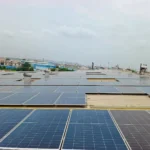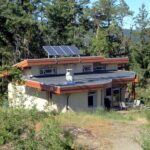Researchers Develop Technique to Improve Durability of Perovskite Solar Cells
Researchers Develop Technique to Improve Durability of Perovskite Solar Cells
A team of international researchers has developed a new technique that could significantly enhance the durability of perovskite solar cells, a promising emerging technology in photovoltaics. The technique, described in a recent study published in Science, could be an essential step towards commercializing perovskite solar cells and reducing their cost.
Perovskite solar cells are different from traditional solar cells as they are made from nano-sized crystals rather than high-purity silicon wafers. The perovskite crystals are dispersed into a liquid and spin-coated onto a surface using low-cost and well-established techniques. These types of solar cells have the potential to overcome the inherent efficiency limitations of silicon solar cells.
One key vulnerability point is the interface between the perovskite layer and the adjacent layers, called the carrier transport layer. These adjacent layers extract the electrons or holes flowing through the circuit. In cases where the chemical bonding between these layers and the perovskite layer gets damaged by light or heat, the electrons or holes can’t get into the circuit, which lowers the cell’s overall efficiency.
To address this issue, the international research team used computer simulations based on density functional theory (DFT) to predict what kind of molecules would best create a bridge between the perovskite layer and the charge transport layers. The simulations predicted that Lewis acids containing phosphorus would have the best effect.
In the lab, the team tried out various formulations of phosphorus-containing molecules and discovered that the best performance came from a material known as 1,3 bis (diphenylphosphino)propane, or DPPP. The team built inverted perovskite solar cells that contained DPPP and some without it. The team found that, with DPPP, the overall power conversion efficiency of the cell stayed high for approximately 3,500 hours under ambient conditions, without additional heating. This represents a considerable improvement compared to previous records, where perovskite solar cells tend to see a significant drop in their efficiency after 1,500 to 2,000 hours.
The team has applied for a patent for the DPPP technique and has received interest from commercial solar cell manufacturers. The researchers believe that their approach represents a new path forward, where DFT simulations and rational design can point the way towards promising solutions.
In recent months, other researchers have also made strides in perovskite solar cell research. Researchers at the École Polytechnique fédérale de Lausanne and Sungkyunkwan University in South Korea identified the cause behind the degradation of perovskite solar cells and developed a technique to improve their stability. Meanwhile, researchers at the Helmholtz-Zentrum Berlin achieved efficiencies of well above 24% for perovskite solar cells that are resistant to drop under rapid temperature fluctuations between -60 and +80 degrees Celsius over one hundred cycles.
The progress being made in perovskite solar cell research is exciting and shows promising potential for this technology to play a significant role in meeting our energy needs in the future. With continued development and investment, perovskite solar cells could become a cost-effective and efficient solution for renewable energy generation.
Suggested Articles

India and Japan Strengthen Renewable Energy Cooperation
India and Japan have initiated a partnership under the Asia Energy Transition Initiative (AETI) to support India’s clean energy transition. India has set an ambitious target of achieving net-zero by 2070, while Japan aims to achieve the same by 2050.

Solar Savings Made Simple: Know Your Cost Cuts in 2025
Maximize your solar savings in 2025. Learn how solar energy reduces electricity costs for homes and businesses.

Maintenance Of Solar Power Plant in India: Everything You Need to know
Proper maintenance is key to maximizing the efficiency and lifespan of solar power plants in India. Learn essential tips, best practices, and common maintenance tasks.

Go Off-Grid with Solar Energy: A Complete Guide
Living off-grid, more commonly defined as not having a dependence on public utilities such as electricity, sounds appealing for a lot of reasons. The idea of being self-sufficient, powering your own home with solar energy, and maybe even building that home with your own two hands can sound like a dream and a challenge for people who wish to live life on their terms.

What Is an Array Junction Box in Solar PV Modules? | Complete Guide
The Array Junction Box (AJB) is a critical component in solar PV systems, connecting multiple solar modules and ensuring safe flow of electricity to the inverter. This blog explains what an AJB is, its key features, types, and why it is essential for both residential and commercial solar installations. Understand how AJBs protect your system from overload, short circuits, and environmental factors while maintaining optimal performance.

Capex vs Opex Solar Model: Which is Better for Your Energy Needs?
Solar energy systems are becoming increasingly popular in homes and businesses around the world. With rising electricity costs, solar energy provides an attractive alternative to traditional energy sources.

Solar String Sizing Check: Did Your Installer Get It Right?
Worried your rooftop solar strings might be sized incorrectly? Check these tips to ensure your Solar PV system is installed for maximum efficiency and safety

Yes, I Have Installed an Optimized Solar PV Rooftop System at My Premises
A solar power generating system converts sunlight into electricity for residential, industrial, and commercial use. This blog explains the components, working, and benefits of solar systems, helping you understand how to harness solar energy efficiently and sustainably.